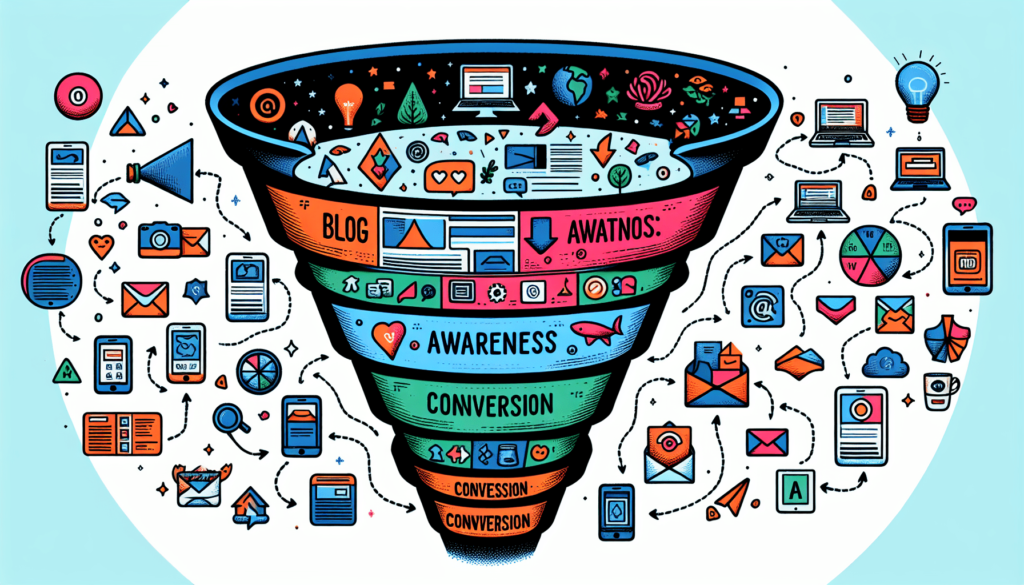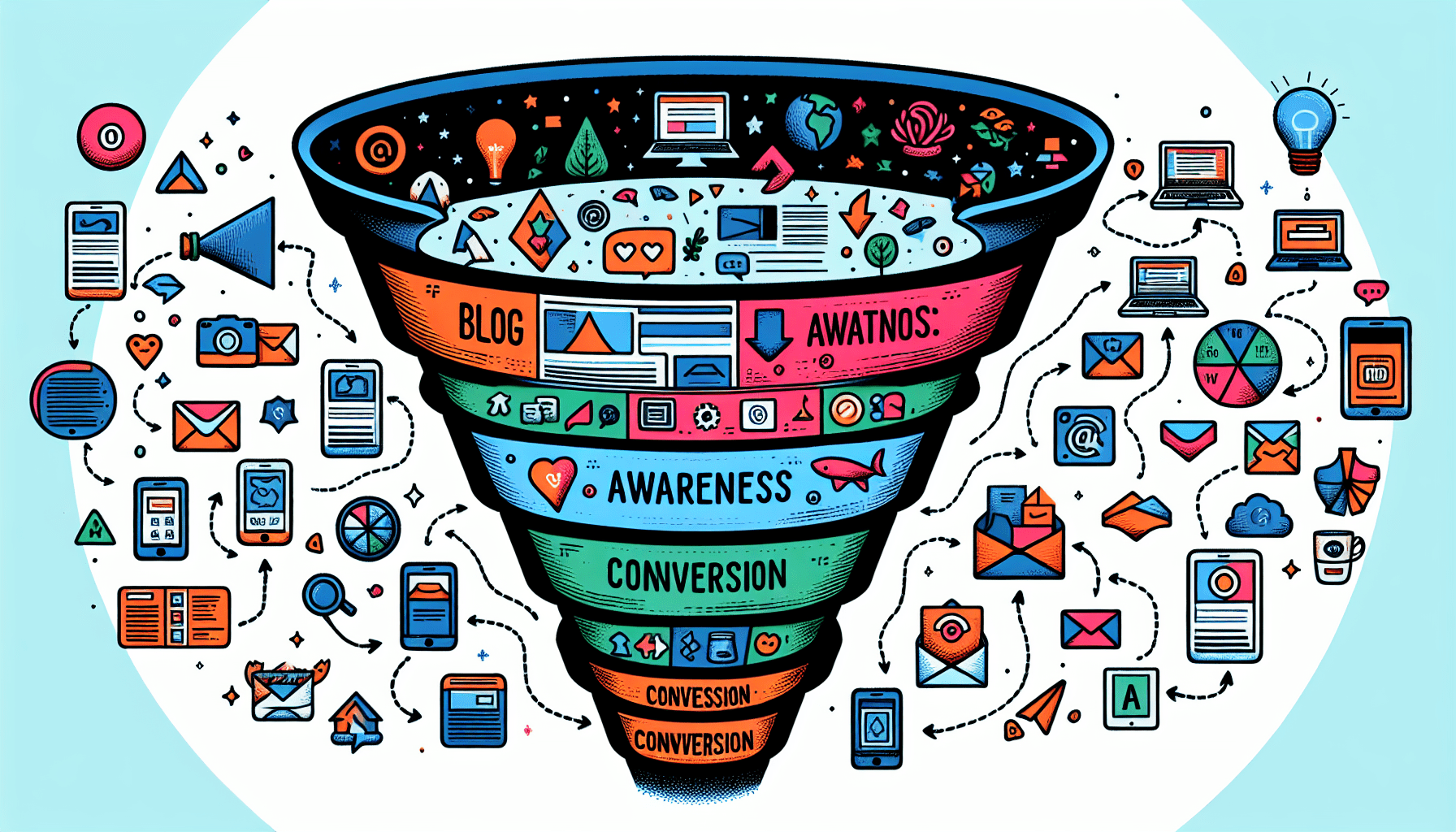Step-by-Step Guide to Building a Content Marketing Funnel
Are you ready to amplify your content marketing strategy and drive more conversions? Building a content marketing funnel is a crucial step in attracting, engaging, and converting leads into customers. In this comprehensive guide, you will learn how to strategically create and optimize a content marketing funnel that will help you achieve your business goals.

What is a Content Marketing Funnel?
Before we dive into the process of building a content marketing funnel, let’s first understand what it is. A content marketing funnel is a systematic approach to lead generation and nurturing, guiding your target audience through various stages of the buyer’s journey. It consists of different phases, each serving a specific purpose in moving leads closer to making a purchase.
So, are you ready to take your content strategy to the next level by creating an effective marketing funnel? Let’s get started!
Understanding the Buyer’s Journey
To build a successful content marketing funnel, you first need to understand the buyer’s journey. The buyer’s journey consists of three key stages: awareness, consideration, and decision. Each stage represents a different point in the customer’s process of researching, evaluating, and making a purchase decision.
At the awareness stage, customers become aware of a problem they are facing and start looking for solutions. The consideration stage involves evaluating different options available to solve the problem, while the decision stage is when the customer makes a final purchase decision.
By mapping out the buyer’s journey, you can create content that caters to each stage of the funnel, addressing the specific needs and concerns of your target audience at different points in their decision-making process.
Creating Customer Personas
One of the most important steps in building a content marketing funnel is creating customer personas. Customer personas are fictional representations of your ideal customers based on real data and market research. By defining your target audience’s demographics, interests, pain points, and preferences, you can tailor your content to resonate with their needs and motivations.
When creating customer personas, consider factors such as age, gender, income level, job title, challenges, goals, and purchasing behavior. This information will help you create targeted content that speaks directly to your audience’s interests and drives engagement and conversions.
Setting Clear Goals and Objectives
To measure the success of your content marketing funnel, you need to establish clear goals and objectives. Whether your goal is to generate leads, increase website traffic, or drive sales, it’s essential to define specific and measurable KPIs that align with your business objectives.
Consider setting goals such as increasing lead generation by X%, improving website conversion rates, or boosting customer retention. By setting clear objectives, you can track your progress, identify areas for improvement, and optimize your content marketing funnel for optimal results.

Developing a Content Strategy
Once you have a solid understanding of your target audience and business goals, it’s time to develop a comprehensive content strategy. Your content strategy should outline the types of content you will create, the channels you will utilize to distribute your content, and the key messages you want to communicate to your audience.
Consider creating a content calendar to plan and organize your content creation efforts. This will help you stay consistent with your content publishing schedule and ensure that your content aligns with your overall marketing strategy.
Creating Engaging and Valuable Content
The success of your content marketing funnel depends on the quality and relevance of the content you produce. To attract and engage your target audience, focus on creating content that is informative, educational, and valuable to your readers.
Consider using a mix of content formats such as blog posts, videos, infographics, podcasts, and social media posts to cater to different preferences and learning styles. By providing a variety of content types, you can capture the attention of a wider audience and keep them engaged throughout the buyer’s journey.
Implementing Lead Capture Strategies
In order to move leads through the content marketing funnel, you need to implement lead capture strategies to collect valuable information from your audience. Consider using lead magnets such as ebooks, whitepapers, webinars, or free trials to entice visitors to provide their contact information in exchange for valuable content.
Make sure to strategically place lead capture forms on your website, landing pages, and content pieces to encourage conversions. By capturing leads effectively, you can nurture them through the funnel and guide them towards making a purchase decision.
Nurturing Leads with Email Marketing
Email marketing is a powerful tool for nurturing leads through the content marketing funnel. By sending personalized and targeted emails to your subscribers, you can provide valuable content, promotions, and updates that keep them engaged and interested in your products or services.
Consider segmenting your email list based on customer preferences, behaviors, and interests to deliver more personalized and relevant content. By nurturing leads with email marketing, you can build trust with your audience, drive conversions, and ultimately increase revenue for your business.
Analyzing and Optimizing Your Funnel
Once your content marketing funnel is up and running, it’s essential to continuously analyze and optimize its performance. Use analytics tools such as Google Analytics, HubSpot, or SEMrush to track key metrics such as traffic, engagement, conversions, and ROI.
Identify areas of the funnel that are underperforming and make data-driven decisions to optimize your content and conversion strategies. Regularly A/B test different elements of your funnel, such as headlines, CTAs, and landing pages, to improve your overall conversion rates and achieve your business objectives.
Conclusion
Building a content marketing funnel is a strategic and iterative process that requires planning, creativity, and persistence. By understanding the buyer’s journey, creating customer personas, setting clear goals, and developing a comprehensive content strategy, you can build a funnel that attracts, engages, and converts leads into loyal customers.
Remember to create valuable and engaging content, implement lead capture strategies, nurture leads with email marketing, and analyze and optimize your funnel for continuous improvements. By following these steps and best practices, you can build a successful content marketing funnel that drives results and helps you achieve your business goals. So, are you ready to take your content marketing to the next level? Start building your content marketing funnel today and watch your conversions soar!

